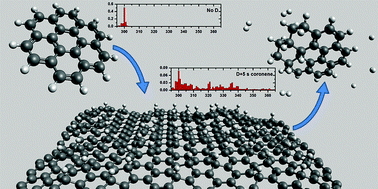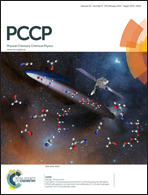Hydrogenation of PAH molecules through interaction with hydrogenated carbonaceous grains
Abstract
Carbonaceous materials contribute to a significant proportion of the interstellar dust inventory. Reactions on such grain surfaces are thought to play important roles in interstellar chemical networks. Of particular importance are reactions involving hydrogen atoms, and pathways to the formation of the most abundant molecular species, H2. Polycyclic aromatic hydrocarbons (PAHs) are an additional carbon reservoir, accounting for around 10% of the galactic carbon budget. Using thermal desorption and mass spectrometric techniques, we have investigated the interaction between PAH molecules and carbonaceous grain surfaces. We demonstrate that deuterium atoms adsorbed on graphite can react with adsorbed PAH molecules, forming superhydrogenated PAH species. Furthermore, by considering the number of D-atoms remaining bound to the graphite surface and the additional D-atoms in the observed superhydrogenated species, we see evidence for a significant release of deuterium from the graphite surface. We suggest that further reactive processes may be responsible for part of this deuterium loss, indicating that PAHs adsorbed on hydrogenated carbonaceous grains in warm interstellar environments may serve as a route to release H2 as well as forming superhydrogenated PAH species.

- This article is part of the themed collection: Astrochemistry

 Please wait while we load your content...
Please wait while we load your content...